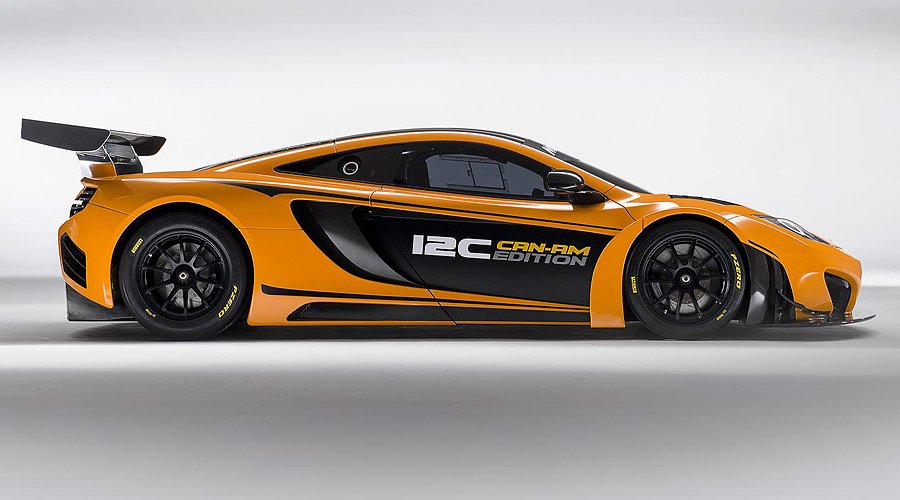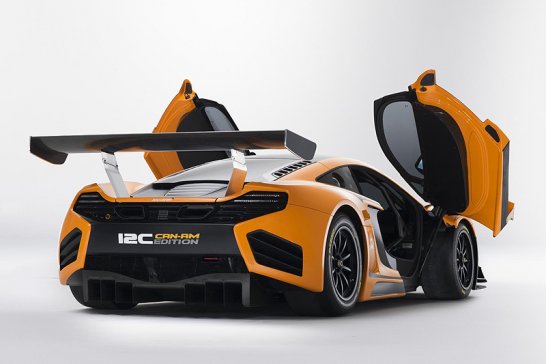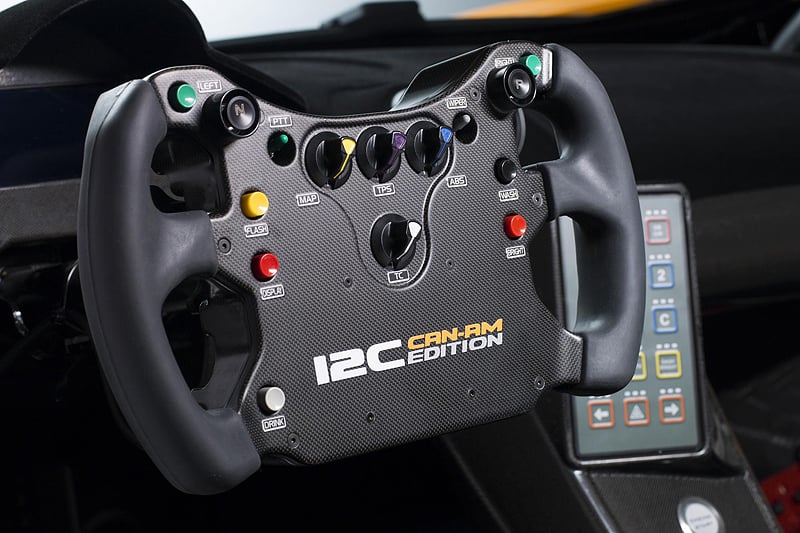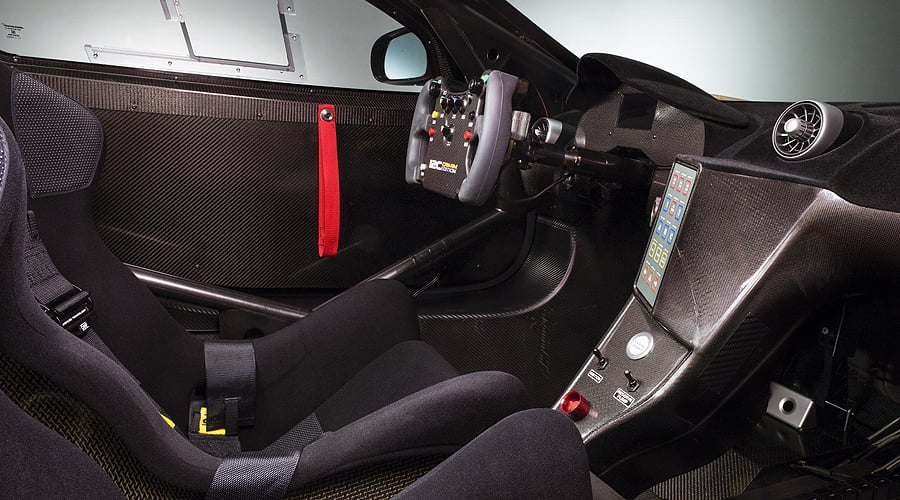The 12C racing concept has been designed for the North American market by McLaren GT, the recently established race-car manufacturing arm of the McLaren Group. The McLaren Orange livery is a tribute to the 1960s and 1970s race cars of Bruce McLaren and Denny Hulme and creates a striking visual contrast to the satin black of the roof, doors and bumpers. The side radiator vanes, wing mirrors and engine cover are also in carbonfibre.
While the 12C Can-Am Edition shares the same carbonfibre MonoCell chassis as the road-going version, the 3.8-litre twin-turbo V8 has been recalibrated to give up to 630HP, making it the most powerful 12C derivative yet. The Can-Am Edition is fully race-ready inside as well as out, with two black race seats and six-point harnesses, plus a race-specification rollcage.



Meanwhile, that 30 per cent increase in downforce has been helped along by a carbonfibre front splitter and dive planes, a carbonfibre diffuser beneath the two-tone rear bumper, and – dominating the rear of the car – a vast carbonfibre wing held in place by polished aluminium mounts.

Photos: McLaren







